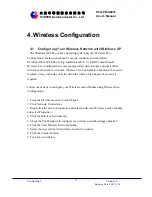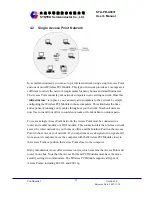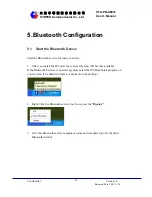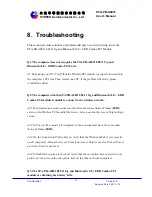
Confidential
Version1.0
Released
Date:
2007.11.22
23
太
欣
半
導
體
股
份
有
限
公
司
SYNTEK Semiconductor Co., Ltd.
STA-PB-A0031
User’s Manual
4.6 WiFi
Security
Considerations
Transmitting data via radio waves presents real security risks. Someone within your
wireless network range could, with a fair amount of effort, access your network and
the data you transmit. You might have heard about the white vans that drive slowly
through neighborhoods and capture account numbers and passwords. Eavesdropping
on computer networks (a.k.a. “sniffing”) requires costly equipment and it is therefore
unlikely that your neighbor is a real threat.
If you want to ensure the security of your data, wireless LAN technology provides
different means to that end. WLAN security standards have progressed from WEP to
TKIP to WPA and AES. Each stage in this progression provides users with more
protection than the previous stage. Using the same type of security standard
throughout the network is a necessity. You cannot configure a profile using WPA and
expect to communicate with an Access Point using WEP.
For those who want an effective security feature, the STA-PB-A0031 802.11b/g and
Bluetooth v2.0 + EDR Combo PCI card support the Wired Equivalent Privacy (
WEP
)
security standard. This feature uses a network key called a WEP key, which encrypts
data so that it is only readable by other computers that have a matching WEP key. The
WEP key must be entered and stored on each wireless device in the network. You
cannot configure a profile using one WEP key and expect to communicate with an
Access Point using a different WEP key. Assigning WEP keys in a large environment
can be problematic for the system administrator. If an employee leaves your company,
new WEP keys should be assigned to protect the network from the former employee
who knows the secret key.
















































